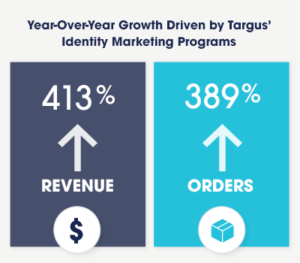What Is Customer Acquisition?
Customers have endless choices about where to spend their time and money. For example, there are nearly 7,000 subscription box companies worldwide and more than one million retail establishments across the United States. With option overload, customers can be extremely selective, and brands must prioritize customer acquisition and retention.
Customer acquisition is the process brands use to bring in new customers or clients. To succeed, brands need a “systematic, sustainable acquisition strategy” that evolves with new trends and changes. A successful customer acquisition strategy:
- Drives sales and revenue.
- Provides credibility with outside stakeholders.
- Generates brand awareness.
- Can be measured to determine success.
- Is scalable across the business.
- Keeps acquisition costs down.
This article discusses the new customer acquisition process, the cost to acquire new customers, customer retention, customer acquisition strategies and examples, and how new forms of personalization called identity marketing are proving to lower acquisition costs and increase engagement.
What Does the Customer Acquisition Process Look Like?
The customer acquisition process is most commonly visualized as a sales funnel. As consumers move through the funnel, consumers:
- Gain awareness about the brand.
- Add the brand’s product or service to the consideration pool.
- Decide to buy the product or service.
The Six Steps of Customer Acquisition
Most people won’t move through the customer journey as defined by the sales funnel. Customers learn about—and engage with—a brand at different times and places and in different ways. However, the funnel, which includes six steps, is a good framework for understanding how a potential customer learns about a product or service, evaluates it, and eventually makes a purchase.

Top of the Funnel – Leads
1. Awareness: This is the first time that a lead learns about or makes contact with a brand, often through educational, SEO content.
2. Interest: The lead decides whether or not they’re interested in the brand and what it has to offer. Landing pages, infographics, videos, and social media content can help turn leads into prospects.
Middle of the Funnel – Prospects
3. Consideration: The prospect decides a product or service could be useful, but they want to know if the brand is trustworthy—e.g., is the brand a helpful expert. How-to blog posts and videos, case studies, and ebooks help build that trust. Brands can encourage prospects to sign up for email newsletters and other valuable content.
4. Intent: The prospect must be convinced that buying from the brand—instead of a competitor—is a wise move. Product-specific information such as white papers, webinars, and FAQs work well in this stage.
5. Evaluation: The brand proves that it has the best product or service through reviews, customer testimonials, demos, and case studies.
Bottom of the Funnel – Customers
6. Purchase: The customer is ready to buy, and special offers like free trials, gifts, or discounts can seal the deal.
To identify and reach their ideal customers, companies invest a lot of money in lead generation activities (the first two steps in the typical sales funnel). Online advertising and customer intelligence platforms eat up a disproportionate amount of the marketing spend. Marketing technology consumed nearly one-third of CMOs’ budgets in 2018, and 8.9% of their martech budget was spent on marketing and customer analytics platforms.
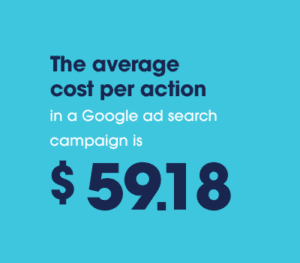
Online advertising is another high-cost category:
- The average cost of an advertisement on Google Ads (Adwords): $2.32 per click on the search network
- The average cost per action (CPA) in a Google ad search campaign: $59.18
- The most expensive keywords in Google advertising and Bing Ads: $50+ per click
- The average cost per click of an online Facebook ad: $1.72. The average cost per action: $18.68
The following chart breaks down the numbers another way—the average cost per lead by industry:
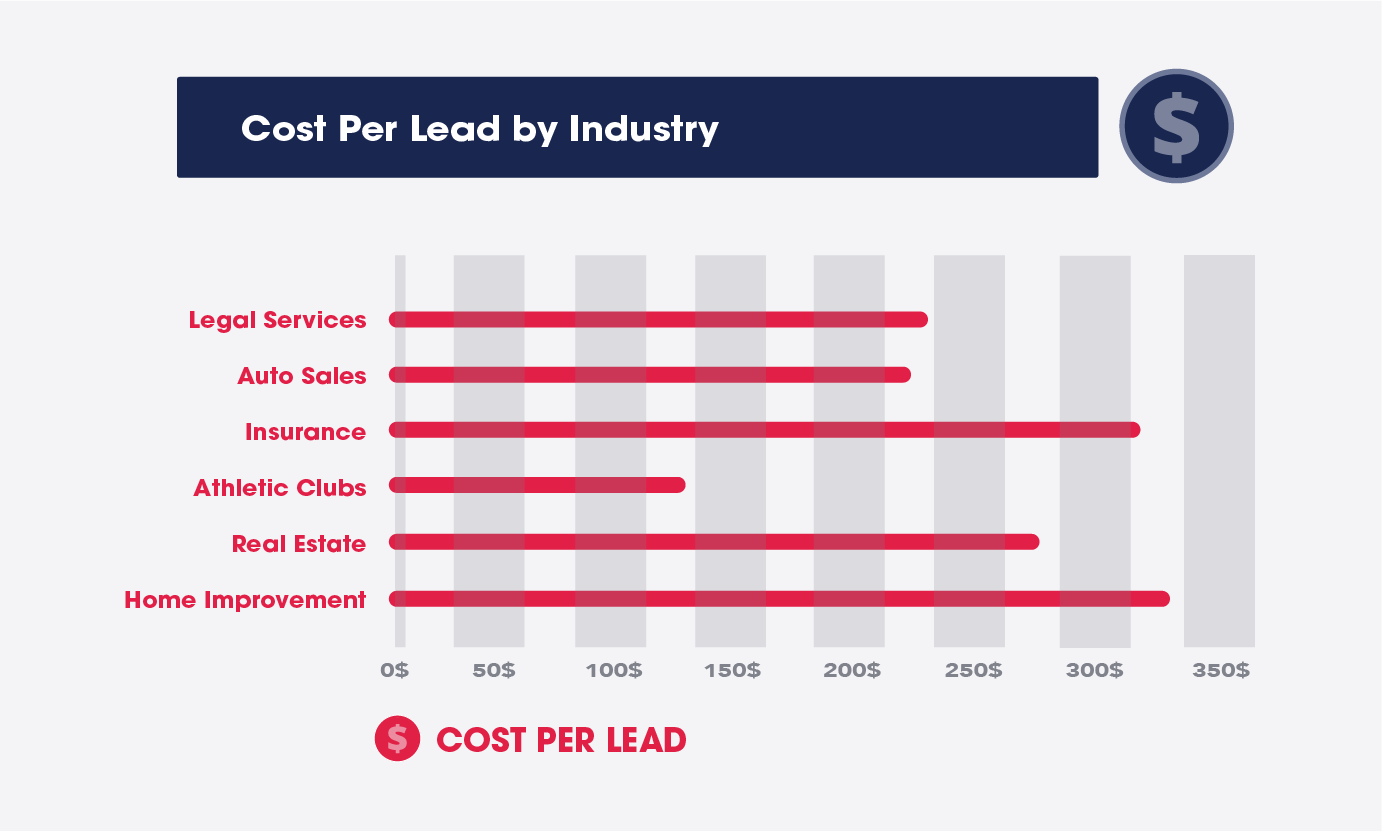
The #1 Customer Acquisition Strategy You Could Be Missing
In the rush to generate and qualify leads, brands may overlook a prime strategy for customer acquisition marketing: optimizing the offer. To be fair, before identity marketing, brands couldn’t do much to protect the value or exclusivity of an offer. For example, student discounts could be easily hacked by creating fake .edu email addresses. And brands have reported rates of discount abuse as high as 35%. Now they can maintain the integrity of the discount with gated, personalized offers that require digital verification to redeem.
These offers open up a world of opportunities for new customer acquisitions because they carry more weight than the typical discount. Nearly all Americans (94%) would take advantage of a gated, personalized offer that was not available to the general public.
Brands can use these personalized offers to target specific, high-value consumer populations such as teachers, students, the military, and seniors. When brands engage these “consumer tribes,” they harness the networking power of the group’s members, who virally share the offer. For example, 96% of the military would share a personalized offer with others in the military community, and 78% of teachers learn about teacher discounts from a friend or co-worker.
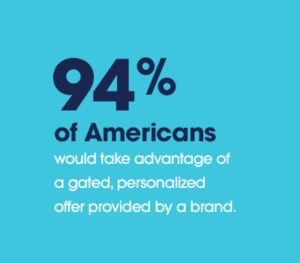
Travel brand Globus experienced this success firsthand. The company needed to reach both the travel agents who book their tours and the consumers who search online for vacation deals—which is difficult to do in a crowded market where all their competitors offer promotions and flash sales on a daily basis.
To stand out amid the noise, Globus launched a campaign that offered exclusive discounts to the military via flash sales. These gated, personalized offers were easy to redeem while protecting the company from discount abuse. The campaign:
- Reduced discount abuse by more than 30%.
- Outperformed other flash sales by 20%.
- Took 75% less effort and fewer resources to implement.
Customer Acquisition Costs
Nearly half (45%) of retail brands believe that customer acquisition is one of their top revenue drivers. But that growth will be limited unless businesses manage their customer acquisition costs (CAC), which have risen nearly 50% in five years.
Customer acquisition costs are the total sales and marketing dollars spent to gain a new customer during the time that money was spent. The calculation looks like this:
CAC = Total Marketing and Sales Costs / # of New Customers Acquired
For example, if a brand spends $54,000 to acquire 1,000 customers the CAC is $54. CAC costs may include ad spend, salaries, costs to create content, technical and publishing costs, management time, production, and inventory upkeep.
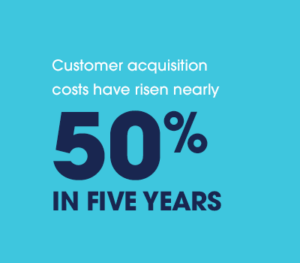
Some CACs benchmarked across different industries include:
- Travel: $7
- Retail: $10
- Consumer Goods: $22
- Manufacturing: $83
- Transportation: $98
- Marketing Agency: $141
- Financial: $175
- Technology (Hardware): $182
- Real Estate: $213
- Banking/Insurance: $303
- Telecom: $315
- Technology (Software): $395
How Valid Is Your CAC?
- On average, how often does a customer buy? The CAC for a car dealership will differ from the local fast-food franchise.
- When is the expected payoff for your marketing efforts? A Q4 campaign paid for in Q2 can skew the Q2 CAC.
- What is the CAC for a single campaign? Here’s one example: A brand acquires 100 new customers from a $2,000 Facebook ad campaign, for an average $20 CAC per customer. But the business needs to factor other external costs, such as a graphic designer to create the ad and a virtual assistant to handle the sales calls. At $500 for each of these professionals, the true acquisition cost is $3,000, raising the CAC to $30.
What Is Customer Lifetime Value (LTV)?
CAC should not be the only number used to evaluate the effectiveness of a brand’s marketing efforts. Customer lifetime value (LTV) is an important metric that tells brands the revenue they’ll receive from an individual or business during their time as a paying customer. Customer LTV can help recurring revenue businesses like subscription services identify their most profitable customers.
It is essential to calculate and compare both CAC and LTV when reviewing the effectiveness of marketing and sales efforts. Calculating the LTV/CAC ratio compares the lifetime value of a new customer against the cost of acquiring that customer. Ideally, brands should plan to recover the cost of acquiring a customer within a year. So if the average customer brings in $1,500 over 50 months, it should cost about $360 to acquire customers. Generally, an LTV/CAC ratio greater than 3.0 is considered “good.”
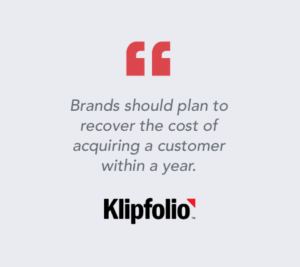
How to Improve Customer Acquisition Costs
The more it costs to acquire a customer, the less value they bring. Brands can minimize CAC by increasing the value of current customers. Happy customers will provide referrals or act as promoters of a brand. Also, brands can consider the acquisition cost by campaign or method and find newer, cheaper channels to promote their message and offers.
Marketing to high-value consumer tribes who support each other—which includes alerting other members to a good deal—increases customer value and lowers acquisition costs. The social sharing inherent among tribal members expands reach far beyond traditional marketing and sales methods.
Customer Acquisition versus Customer Retention
The competition to acquire and retain customers is fierce. Businesses, especially subscription services and streaming media companies, battle to keep customers who are quick to switch to another service when they see the next great trial offer. Nearly 40% of e-commerce subscribers have canceled a subscription.
Common causes of customer churn include:
- The value of a product or service is unclear, especially for newer customers who may not have the support they need to learn how to fully use it. Also, people may lose interest over time if they tire of a product or service, such as programming on a media streaming service.
- Slow implementation. Customers want to quickly reap the benefits of a product or service they buy.
- Complaints that aren’t satisfactorily handled. If a customer repeatedly has to report the same problem or if their complaints aren’t properly resolved, they’ll get frustrated. And they might leave.
- Poor customer engagement. Customers want to feel valued, which means continually engaging and educating them in positive, proactive ways. Customers feel an emotional bond to a brand that truly sees who they are. One way to do this is to recognize their membership in a consumer tribe, such as students, teachers, or the military. When brands honor consumers’ identities in this way, it triggers a powerful sense of belonging, which creates a deeper relationship with the brand.
Customer Retention = Customer Acquisition
It costs five times as much to attract a new customer as it does to keep an existing one. And increasing customer retention rates by 5% boosts profits by up to 95%. Customer retention is vital; in fact, experts consider it the new customer acquisition.

Michaels, the arts and crafts retailer, excels at customer retention. The brand is on a mission to help customers express their creativity 365 days a year. Typically, the demand for creative supplies ebbs and flows. But Michaels is addressing the seasonal slumps—i.e. retaining customers—by rewarding key audiences with gated, personalized offers. The company is setting its programs up for success by following these three tenets:
01 Align Personalized Offers with Consumer Tribes
Michaels targets three high-value groups—teachers, seniors, and the military—that align with its brand identity by offering exclusive discounts that can be combined with other sales. These consumer tribes have tremendous spending power. For example, teachers spend $1.7 billion of their own money on school supplies each year. According to a 2018 survey, Michaels is the number two retailer they shop with most.
02 Improve the Customer Experience to Facilitate Greater Loyalty
Until recently, Michaels’ personalized offers to these groups were only available in-store and required manual verification. This created more work for already-busy store personnel. It also meant shoppers had to prove their eligibility every time they made a purchase—not the best customer experience.
To remedy this problem, Michaels switched to digital verification and tied the personalized offers to its Michaels Rewards program. This enabled Michaels to deliver more value to customers, including a quick sign-up, broader savings, a streamlined verification process, and opportunities for deeper engagement.
03 Use Personalized Offers All Year to Increase Demand
Certain times of the year, such as back-to-school and end-of-year holidays, are peak shopping times for arts and crafts enthusiasts. Michaels can deepen engagement even further with targeted campaigns that keep the brand top-of-mind at other times of the year. For example, Michaels could run a campaign reminding teachers how much they’re valued during the annual Teacher Appreciation Week in May.
Examples of Customer Acquisition and Retention Strategies
Examples of successful customer acquisition marketing strategies include:
- Generating customer referrals. Dropbox’s double-sided referral program incentivizes both parties in the exchange. The referred member receives benefits, and the referrer is given extra storage space. The program permanently increased signups by 60%. And Evernote’s successful referral program grew the brand’s user base to 11 million in a little over three years. Users and their friends get points for every referral they make. The points can be redeemed for the monthly premium membership.
- Delivering a superior customer experience. Two Retail behemoths Amazon and Walmart excel at customer service. Amazon’s one-click purchasing makes it easy to buy. Walmart speeds up the shopping experience with digital store maps that show an item’s exact location.
- Building a community. Kettlebell Kings, an Australian brand that sells kettlebells and gym apparel, posts free educational content on Instagram to help followers enjoy better workouts. Followers also post their own videos, creating a “flywheel of user-generated content” that grows brand awareness and engagement. Kettlebell Kings now has more than 167,000 Instagram followers.
- Using personalization. CVS Pharmacy sends “hyper-targeted” emails to customers participating in the brand’s ExtraCare rewards program. These emails contain offers and coupons for products customers recently bought and are likely to buy again.
- Sharing your mission (and supporting theirs). Footwear brand TOMS offers 10% discounts to teachers and the military. TOMS further engages with educators by supporting organizations such as Magic Bus, which helps to ensure girls and boys complete their education and build the skills they need to move out of poverty. The brand shares its story of giving with an annual impact report.
Identity Marketing as a Customer Acquisition Strategy
Identity marketing, a new form of personalization, is a customer acquisition and retention strategy that focuses on the end stage of the customer buying journey. Rather than over-investing in lead generation activities such as online advertising, brands use identity marketing to target high-value customers.
Here’s how identity marketing works:
- A company creates a personalized offer for a consumer tribe that aligns with its brand and invites prospects to take advantage of it through whatever channels the company normally uses.
- Consumers opt-in to redeem the offer and are digitally verified to ensure the offer’s integrity and prevent discount abuse.
- Brands use this zero-party data to nurture ongoing customer loyalty.
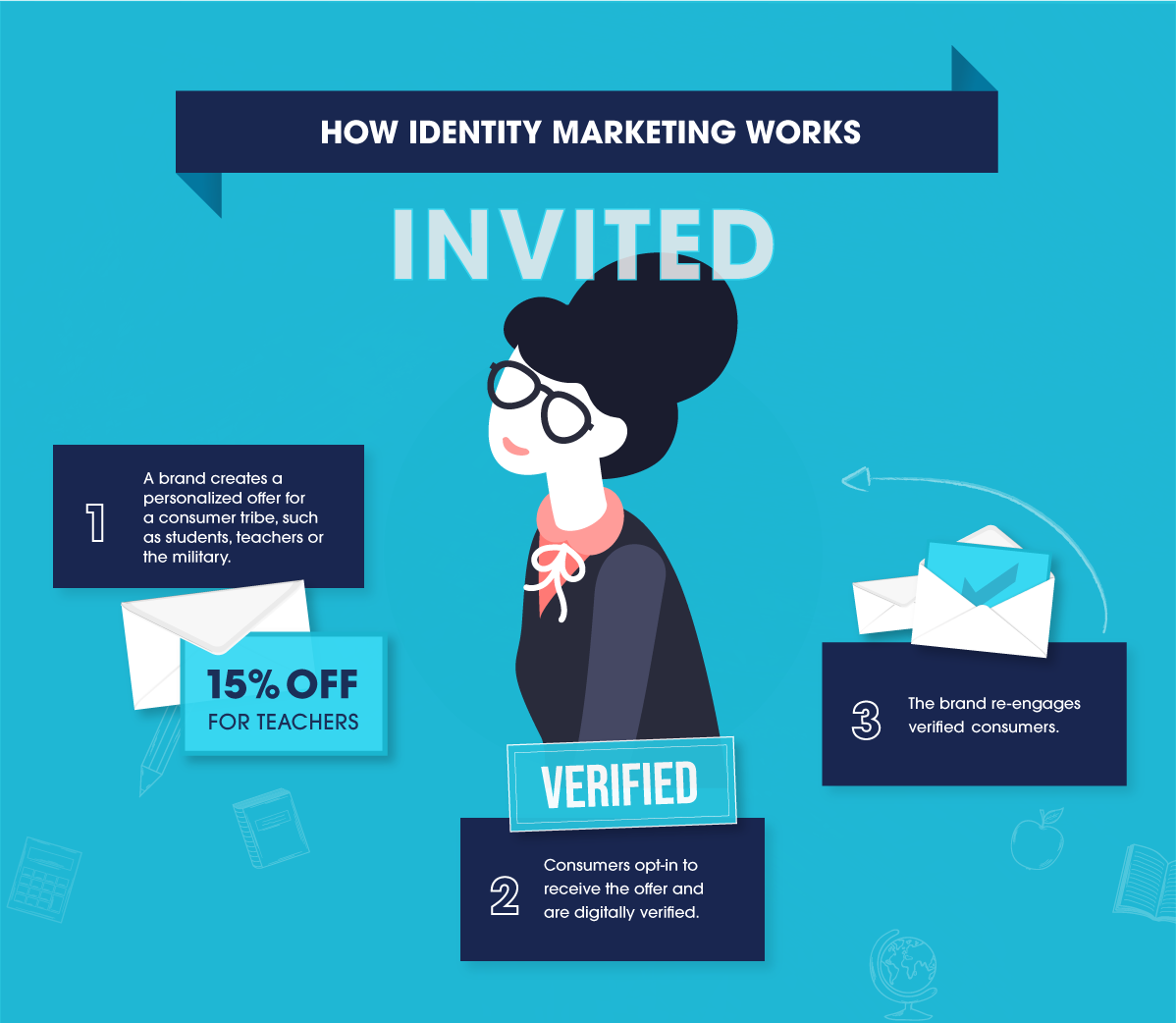
Identity marketing builds on three key pillars that help brands get the greatest results from their client acquisition efforts:
01 Personalization Is Rooted in Identity
Marketing to consumer tribes with identity-driven offers creates a strong emotional connection—something customers want. Research finds that 70% of emotionally engaged consumers spend up to 2x or more on their favorite brands, and 80% promote preferred brands to family and friends. So when brands are willing to align their brand identity with these groups and demonstrate they truly “see” consumers, people are motivated to act. Nearly 95% of consumers given a personalized offer based on their identity would redeem it.
Identity marketing also supports the halo effect. This phenomenon occurs when consumer tribes align with a particular brand they believe represents them and their values. Because of their shared identity, members will prefer that brand over others. In addition, people who are associated with members of a consumer tribe—e.g., a student or teacher’s family—may be influenced by the halo effect.
02 Consent Creates a Reciprocal Exchange
Identity marketing is a form of “invited” personalization, where brands respect consumer privacy by meeting them on equal terms:
- A brand invites all members of the consumer tribe to enjoy a gated, personalized offer.
- Consumers choose to opt-in, “inviting” the brand into their lives.
- The brand and its new customers form a relationship built on mutual respect.
03 Verification Launches a Brand Relationship Built on Trust
To attract the correct audience, brands need to verify customers actually belong to the consumer tribe they’re targeting. Verification ensures the integrity of the offer in the eyes of the audience because they know the offer is truly exclusive. Verification also protects a company’s margins by preventing discount abuse.
Identity marketing further strengthens consumer trust by using third-party verification. Nearly three in five Americans (57%) would rather be verified for a gated, personalized offer by an independent third party than a brand’s customer service representative.
Verification also drives an emotional connection with consumers by creating a sense of communal belonging that motivates social sharing and word-of-mouth marketing. More than 90% of consumers would share a gated, personalized offer that they found on social media with their friends or family. In this way, customers increase their social capital, and brands lower customer acquisition costs.
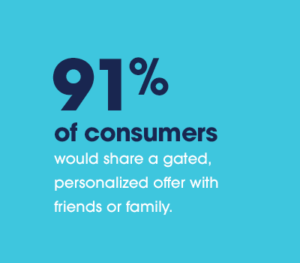
Identity Marketing and Customer Retention
Identity marketing also helps brands with customer retention. Targeting consumer tribes with gated, personalized offers sets the stage for building long-term brand engagement.
The perfect example of this is Lowe’s. The home improvement giant wanted to increase engagement among its military customers. The company created a gated, personalized offer that resulted in a 2-3x higher engagement rate than other campaigns it was running. In addition, Lowe’s has increased email open rates by 2x and click-through rates by 4x while doubling the number of trips buyers make to the store.
Identity Marketing Success Stories
Leading brands in retail, streaming, software, hospitality, and finance use identity marketing to drive down customer and user acquisition costs and improve engagement and retention:
Purple Increased Its Conversion Rate by 6x and Generated a 25:1 ROAS
To stand out in a crowded marketplace, Purple launched a personalized military discount. The mattress maker increased conversions and raised awareness with a lucrative market segment that aligns well with its made-in-the-USA brand.
Comcast Increases Conversions with Personalized Offer to Students
Streaming services company Comcast created a bold offer that appealed to Gen Z: a steep discount to college students on plans that included free access to Amazon Music and HBO. “Our new gated student offer has taken off,” said Cheri Davies, senior director of acquisition marketing. The company saw “an enormous spike in traffic to our site and a significant lift in conversions.”
Targus Uses Identity-Driven Offers to Increase Orders by 389%
Targus helps professionals protect their devices with high-quality laptop and tablet cases as well as other technology accessories. The company wanted to generate greater brand awareness and loyalty while rewarding key consumer tribes and corporate clients. Its identity-driven offers generated a 389% increase in the number of orders and a 413% increase in revenue for personalized offers verified by SheerID.
Consumers have a lot of money to spend and a vast world in which to spend it. Successful brands such as Globus, Michaels, Lowe’s, Purple, and Comcast use identity marketing to acquire and retain high-value customers that naturally align with their business. By protecting the value of an offer, harnessing the social sharing of consumer tribes, and making customers feel honored, identity marketing is one of the smartest customer and user acquisition strategies for long-term engagement and greater customer retention.
